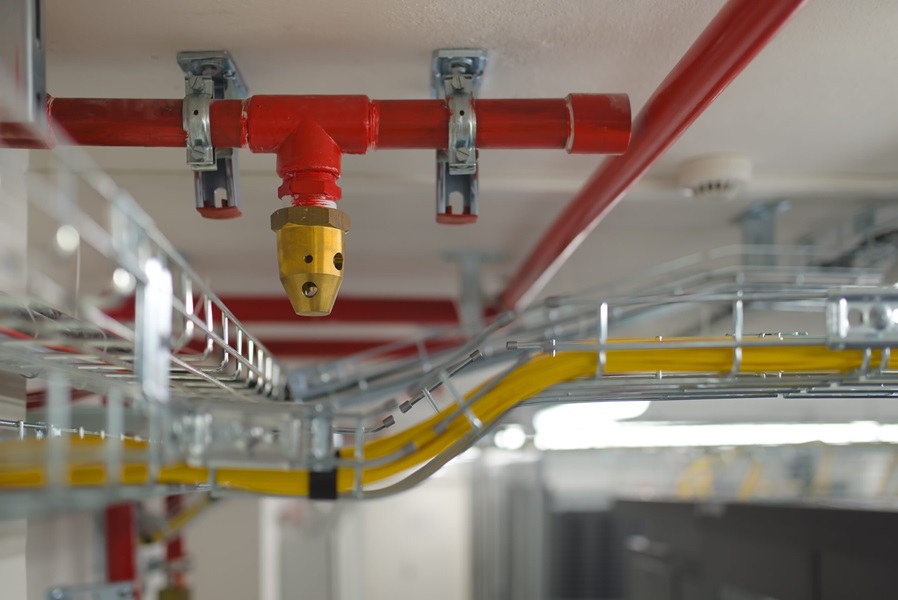In today’s tech-driven world, safeguarding sensitive equipment from potential fire hazards is a top priority for businesses. Whether you’re running a data center, laboratory, or a creative studio, the equipment you rely on is invaluable. A fire, even a small one, can lead to significant losses, both financially and in terms of data and productivity.
To prevent such disastrous outcomes, it’s essential to invest in the right safety measures. Among these, a fire suppression system is one of the most reliable solutions available. But there are many other strategies you can employ to protect your valuable assets from fire. In this article, we’ll discuss various methods to protect sensitive equipment from fire, ensuring your investments are safe.
Why Protect Sensitive Equipment?
Before we dive into the methods of protection, it’s important to understand why protecting sensitive equipment is crucial. Electronics, computers, servers, and machines are often at the heart of business operations. A fire can destroy equipment, compromise data integrity, and lead to costly downtime.
Sensitive equipment is also at risk from water damage, which can occur as a result of traditional fire suppression methods like sprinklers. Fire suppression systems, however, are specifically designed to reduce these risks by using non-damaging agents to suppress fires without compromising your equipment.
Fire Suppression System: A Must-Have Solution
A fire suppression system is an integral component in safeguarding sensitive equipment. These systems work by detecting and extinguishing fires before they can cause substantial damage. Unlike traditional sprinkler systems that release water, which can be harmful to electronics, fire suppression systems use clean agents that do not leave residues or water damage behind.
Whether you operate in a server room, an office filled with high-end computers, or a laboratory, a fire suppression system is an excellent investment to prevent fires from destroying your critical assets.
1. Install Fire Suppression Systems
As mentioned earlier, one of the best ways to protect sensitive equipment from fire is by installing a reliable fire suppression system. These systems detect fires early and suppress them with clean agents like FM-200 or NOVEC 1230. These agents are safe for both people and property and won’t harm your electronics.
They are particularly ideal for areas where water damage would be detrimental, such as server rooms, archives, or museums. The key benefit is that these systems act fast, ensuring that a small spark doesn’t turn into a major fire.
2. Ensure Proper Ventilation
One of the less obvious but effective ways to protect sensitive equipment from fire is ensuring proper ventilation. Overheating can often lead to fires, especially in densely packed areas with lots of electronics. By providing proper airflow, you can help prevent your equipment from becoming a fire hazard.
Make sure that your rooms are well-ventilated, and that air conditioning systems are running optimally to avoid overheating. Clean air filters regularly and make sure that no dust accumulates in the equipment vents, as dust can increase the risk of overheating.
3. Use Fire-Resistant Materials
When building or outfitting rooms that house sensitive equipment, make sure to use fire-resistant materials in the construction and design. This includes fire-resistant cabinets, shelves, and flooring. For example, using fire-resistant drywall or installing fire-rated doors can help contain fires within a designated area, buying you precious time to respond before the fire spreads.
Fire-resistant materials can prevent fires from spreading to your valuable equipment and reduce the damage caused in case of an emergency.
4. Install Fire Alarms and Smoke Detectors
Smoke detectors and fire alarms are a basic yet crucial tool in any fire safety plan. These systems provide early warnings, giving you the opportunity to evacuate or activate your fire suppression system before the fire spreads.
Place smoke detectors near sensitive equipment, especially in areas where heat generation is common. Test the detectors regularly and ensure they are in good working condition, so that in case of an emergency, they can alert you in time.
5. Maintain Regular Fire Safety Inspections
Routine fire safety inspections are a must when it comes to protecting your sensitive equipment. Schedule inspections with professional fire safety teams who can check that all fire suppression systems, alarms, and other fire safety equipment are functioning properly.
In addition to these external inspections, conduct internal checks regularly. This should include inspecting electrical wiring, checking that all fire exits are clear, and ensuring that all fire safety systems are accessible and operational.
6. Implement Proper Cable Management
Wires and cables are often overlooked when it comes to fire safety. However, improperly managed cables can pose a significant fire hazard. Exposed wires can short-circuit, overheat, or cause sparks that may lead to fires.
Ensure that all cables are properly managed and stored in protective conduits. Avoid cluttering cables and wires around high-heat equipment, and always use fire-rated cables that are designed to withstand higher temperatures.
7. Keep Flammable Materials Away
Sensitive equipment is often stored in environments that are also used to store other materials. This can include office supplies, paper, and chemicals. Keep flammable materials away from electronic equipment at all times.
For example, if you’re working in a server room, make sure there are no paper documents, aerosol cans, or cleaning products that could easily catch fire nearby. It’s also a good idea to keep your equipment free from clutter, as excess materials can impede airflow and increase fire risks.
8. Train Employees on Fire Safety Procedures
No fire safety plan is complete without proper training. Ensure that all employees are trained on fire safety procedures, including how to respond to fire alarms, use fire extinguishers, and safely evacuate the building.
Employees should also be made aware of fire safety hazards, such as leaving equipment running overnight or improperly storing flammable materials. By creating a culture of fire safety, your team can help prevent fires before they even start.
9. Use Fire Extinguishers as a Backup
While fire suppression systems are excellent at suppressing fires, it’s still wise to have fire extinguishers on hand for small fires that may occur. Make sure fire extinguishers are easily accessible in all areas where sensitive equipment is stored. Choose extinguishers that are suitable for electrical fires, such as Class C fire extinguishers.
Ensure that all employees are familiar with the proper use of fire extinguishers and that extinguishers are inspected regularly for functionality.
10. Monitor and Test Your Systems Regularly
It’s essential to monitor and test all fire safety systems on a regular basis. Fire suppression systems, alarms, and detectors should be checked periodically to ensure they are in working order. Conduct fire drills to make sure everyone in the building knows how to respond in case of a fire.
If your system uses clean agents like FM-200 or NOVEC 1230, ensure that it is refilled and maintained according to the manufacturer’s instructions. Testing your systems will help ensure that you’re ready in the event of a fire.
Conclusion: A Proactive Approach to Fire Safety
When it comes to protecting sensitive equipment from fire, a proactive approach is essential. Investing in fire suppression systems, maintaining proper ventilation, and using fire-resistant materials are all important steps in preventing fire-related damage. By implementing these practices, businesses can reduce the risk of fire and ensure that their valuable assets are safeguarded.
Remember, fires can happen at any time, so it’s critical to be prepared. With the right fire safety systems in place, you can prevent devastating damage and keep your sensitive equipment safe for years to come.




